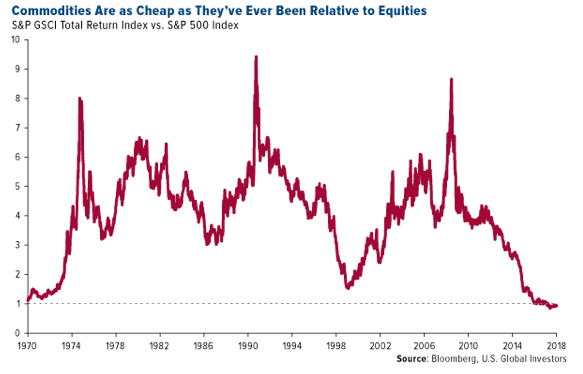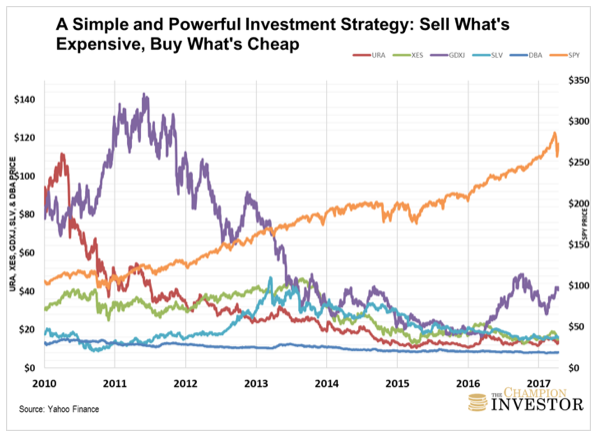The Top 5 Investment Secrets in 2018 from a Financial Expert

If you don’t follow Wall Street, you should probably know: We’re in an “everything bubble” right now.
Stocks, auto loans debt, cryptos, corporate debt, real estate, student debt, credit card debt—you name it. They’re all on the rise. And this uptick isn’t new; it’s been going for almost a decade now (with the crypto bubble being the only exception).
The problem is that most people have watched the markets boom from the sidelines. Why? Well, a lot of individual investors got burned in 2007-2009 during The Great Recession and were reluctant to dive back in.
But that’s changing.
Preliminary results for February’s reading of consumer sentiment just hit its second highest level since 2004.
Here’s why this is important…
The last time sentiment hit these levels was a huge red flag. Three years later came The Great Recession.
And sure, no one knows if the next crisis will happen tomorrow or five years from now. There are signs that the bubble is straining, though; the market finally had its first full market correction (defined as a 10% drop from its 52-week high) in two years.
But whatever the market’s state, one thing is for certain in investing: You don’t want to follow the herd. It doesn’t end well.
This doesn’t mean it’s time to load up on guns, ammo, and build a bunker. To the contrary! There’s always opportunity somewhere.
For example, while almost every asset has soared for years, natural resources and commodities have been battered. This is a massive opportunity for investors because, as you’ll see below, it only comes around once or twice a decade.
In other words, it’s rare.
Look at this chart:

As you can see, this is the cheapest that commodities have ever been compared to stocks.
Wall Street loves everything but commodities and natural resources. This is exactly why commodities and natural resources are a great investment opportunity over the next 3-5 years. You can take advantage of this opportunity by using one of the most powerful strategies in investing, called mean reversion.
Mean reversion states that an asset will move back to its average price over time. Academic research shows significant evidence that this holds true across decades of trading.
Generally, most investors know that prices don’t go up forever. The same principle works in reverse—prices don’t fall forever, either.
So, to put this in our current market context, there are two forces at work: You have the “everything bubble” wherein prices have been going up for years, and you have the “cheap and hated” assets that have been falling in value for years.
The cheap and hated assets is where the profit is made as those assets “revert back” to the mean.
The investors who are buying the “everything bubble” are being set up for big losses in the coming years because the assets will “revert back” to their mean as well.
History spells this out clearly. You get the dot-com bubble, then a crash. The housing bubble, then a crash. The “everything bubble”, then…
It’s so simple it’s almost common sense. But for some reason, people like to buy high and sell. But successful investing requires buying low and selling high!
Now, I’ve spent countless hours looking for the best investment opportunities in 2018, using the principle of mean reversion. I put together a graph to illustrate my findings, showing where prime investment potential is this year:

The orange line is the SPY ETF that tracks the S&P 500 Index. As you can see, it’s been going up for years. Contrarily, several of these resources/commodities have been going down.
As you read through my investment guidance below, keep this chart in mind, and reference this key:
The purple line is the VanEck Junior Gold Miners ETF.
The green line is the SPDR S&P Oil and Gas Equipment and Services ETF.
The red line is the Global X Uranium ETF.
The light blue line is the iShares Silver Trust ETF.
The dark blue line is the PowerShares DBA Agricultural ETF.
That said, here are my top five investment picks that could see big gains over the next 3-5 years:
Agriculture
A recent headline from Bloomberg read, “U.S. Farm Income to Hit 12-Year Low.” According to the USDA, farm profits are at their lowest point since 2006.
Four years of bumper crops have oversupplied the market. But the world population continues to grow and more and more people will need to be eat.
Shares of the PowerShares DBA Agricultural Fund is an easy way to invest in agriculture. The ticker symbol is DBA.
Uranium
The CEO of one of the biggest players in the uranium sector had this to say on a recent earnings call: “Today’s uranium price is too low to incent the investment required to ensure that adequate uranium production is in the market.”
When commodities sell below production costs for too long, the producers go bust and supplies drop. And then, just as with other asset prices, mean reversion takes place. Prices rise and production eventually goes back up.
There are close to 60 reactors under construction around the world right now. More reactors means more need for uranium and edges this sector closer to a coming bull market. And, as the global population keeps growing, the demand for energy keeps growing. There’s a big demand for safe, clean, and reliable base load energy to support the workload of the grid.
Nuclear is still a part of that base load mix. You can invest in the coming uranium bull market by buying the Global X Uranium ETF (ticker URA).
Oil
The Energy Information Administration forecasts that the U.S. will become a net exporter of energy as soon as 2022.
The era of U.S. energy dominance could see it surpass Saudi Arabia and Russia as the global oil powerhouse.
The big driving force behind American energy dominance is U.S. shale. Oil companies no longer need $100 oil to be profitable.
After the oil bust in 2014, many of the weak players went bankrupt. The strong companies tightened their belts and continued focusing on technology to lower costs. Now, many oil companies are making profits at $60 that they use to see at $100. This means companies can now operate in a low oil price environment.
If prices do continue rising, that profit will just add to the bottom line. Investors can take advantage of the rising American energy dominance by buying the SPDR S&P Oil and Gas Equipment and Services ETF (ticker XES).
Gold
After a brutal bear market that lasted for several years, gold entered into a new bull market in early 2016. But don’t worry—it’s just getting started.
One important benefit of gold is that it has historically outperformed other assets in times of global crisis and market crashes. It’s the ultimate hedge against central bank manipulation, inflation, and loss of confidence in currency. It’s likely that that confidence will dip over the next 3-5 years. I.e., it’s a good time to invest in gold.
Owning physical gold coins is a great option, but a better way to invest in the gold bull market is in junior gold mining stocks.
Here’s how that works. You may buy a physical gold coin at $900/ounce—in an effort to secure your money against the ebb and flow of the market. But gains in value will be nominal.
However, if you invest in junior gold mining stocks, your profits (in a bull market) are likely to be significantly more.
In other words, investors can reap big rewards in a gold bull market by investing in a basket of junior gold mining stocks, specifically the VanEck Junior Gold Miners ETF (ticker GDXJ).
Silver
The reasons to buy silver are almost identical to buying gold.
Like GDXJ, silver gives investors juicy returns. This is especially true in the latter stages of a gold bull market when the speculation heats up.
But silver generally outperforms gold, as was the case towards the end of the last gold bull market from late 2008 to early 2011. One difference, however, is that silver also allows investors to take advantage of industrial silver, used for production. And that means higher demand (i.e. higher prices in the market).
Investors can buy iShares Silver Trust ETF (ticker SLV) to take advantage of this.
#
Okay, so you now know where to put your money, but how do you go about investing while keeping risk minimal? It’s called asset allocation (or, splitting up your money across different investments).
Research shows that holding a mix of asset classes is the best way to preserve and build your wealth.
With these five investments, for example, an investor could easily consider adding 5% of their total investment to gold stocks, 5% to silver, 5% to oil stocks, 2.5% to agricultural, and 2.5% to uranium. This would mean commodities and natural resources asset classes would make up 20% of their portfolio—a reasonable amount, that ensure you’re not putting all of your eggs in one basket.
But this level of investment and allocation depends on your own situation. Call your financial or wealth advisor and talk about your options before making any decisions.
Bottom line: Keep commodities in mind as you look at investing this year. It could be their time to shine.
[Investment advice in this article is used at the reader’s discretion. Early to Rise and Chad Champion cannot be held liable for individuals’ investment decisions. Always consult with a financial/investment expert before making these decisions.]
